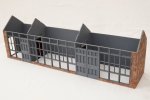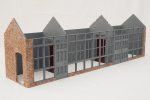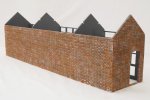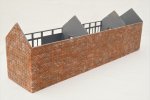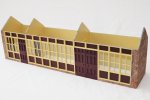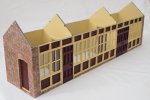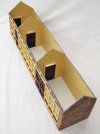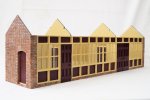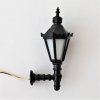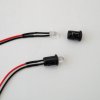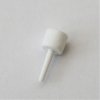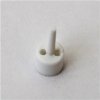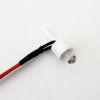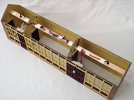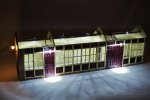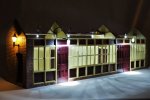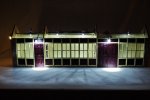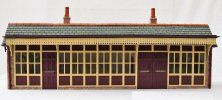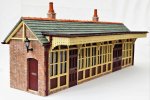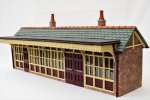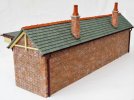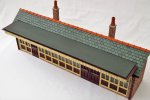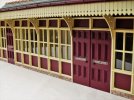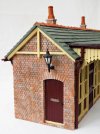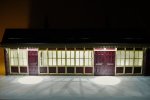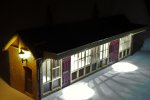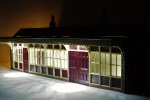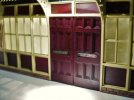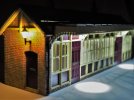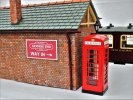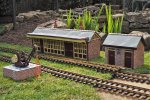Part 1
Christmas 2020, Father Christmas was kind enough to deliver a number of cast resin buildings for the Claptowte Railway, including a Kippo Models Station Building and Toilet Block. I had not previously had any experience of putting together resin building kits, so it was logical that I start with the smallest and simplest, this being the Toilet Block. As this was the first resin cast building that I had assembled, it was to be my test piece. Having gained some knowledge and experience from that kit, I decided to tackle the much larger and more complex station building.
As with the Toilet Block, the first task was to clean up the various component parts to remove any flash from the resin casting process, I set about them with files and abrasive paper then everything was given a good wash in soapy water to clean off any mould release agent. I had to give some thought to how much assembly could be undertaken without the need to paint various parts first. I decided that I would start by assembling the bare shell of the building first, comprising the front, rear, two end and two partition walls. Copying the instructions and advice from the Toilet block construction, the parts were glued together using Gorilla Superglue. I then worked some Unibond repair metal into the brickwork interlocking corner joints which were scribed and filed to match. I also ran some Unibond down the inside corners, including the partition walls, in order to reinforce the bonds.
Even at this early stage, I worked in a couple of alterations to suit my needs. The three doors at the front and the two doors in the partition walls of the building were without doorknobs. I made some up out of some 2.5mm mains cable and insulation and added them at this stage. My other modification was to file two slots in the top of each of the top edges of the partition walls in anticipation of adding internal lighting at some stage and therefore the need to facilitate the wiring.
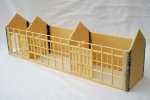
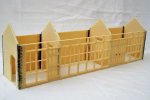

The bare skeleton of the building primed ready for painting
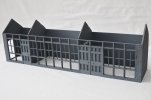

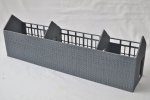
Having primed the bare walls of my Kippo Station Building for the Claptowte Railway I had decided that the next step would be to paint it. Although I do not necessarily intend to add much in the way of interior detail, at least not in the short term, one glaring omission stood out to me, and that was the fact that the interior walls had a door moulding on one side only. I decided that they needed the depiction of a doorway on both sides to make any sense of the interior. I set about creating doors on 'the other side' of the walls, using thin plasticard sheet. The doors /frames did not need to be as detailed as the original moulding as they would be largely obscured once the building is complete, so a simple representation of a panelled door would suffice. The door knobs were represented by the same 2.5mm wire/insulation as mentioned previously.
The original moulded door and frame.
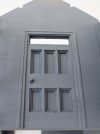
The reverse side of the wall before adding the other side of the door.
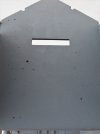
The plasticard door added.

The plasticard door added and primed
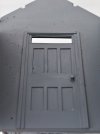
The interior with the new doors fitted

The remainder of the building components, cleaned up and primed, ready for painting.

David
Christmas 2020, Father Christmas was kind enough to deliver a number of cast resin buildings for the Claptowte Railway, including a Kippo Models Station Building and Toilet Block. I had not previously had any experience of putting together resin building kits, so it was logical that I start with the smallest and simplest, this being the Toilet Block. As this was the first resin cast building that I had assembled, it was to be my test piece. Having gained some knowledge and experience from that kit, I decided to tackle the much larger and more complex station building.
As with the Toilet Block, the first task was to clean up the various component parts to remove any flash from the resin casting process, I set about them with files and abrasive paper then everything was given a good wash in soapy water to clean off any mould release agent. I had to give some thought to how much assembly could be undertaken without the need to paint various parts first. I decided that I would start by assembling the bare shell of the building first, comprising the front, rear, two end and two partition walls. Copying the instructions and advice from the Toilet block construction, the parts were glued together using Gorilla Superglue. I then worked some Unibond repair metal into the brickwork interlocking corner joints which were scribed and filed to match. I also ran some Unibond down the inside corners, including the partition walls, in order to reinforce the bonds.
Even at this early stage, I worked in a couple of alterations to suit my needs. The three doors at the front and the two doors in the partition walls of the building were without doorknobs. I made some up out of some 2.5mm mains cable and insulation and added them at this stage. My other modification was to file two slots in the top of each of the top edges of the partition walls in anticipation of adding internal lighting at some stage and therefore the need to facilitate the wiring.



The bare skeleton of the building primed ready for painting



Having primed the bare walls of my Kippo Station Building for the Claptowte Railway I had decided that the next step would be to paint it. Although I do not necessarily intend to add much in the way of interior detail, at least not in the short term, one glaring omission stood out to me, and that was the fact that the interior walls had a door moulding on one side only. I decided that they needed the depiction of a doorway on both sides to make any sense of the interior. I set about creating doors on 'the other side' of the walls, using thin plasticard sheet. The doors /frames did not need to be as detailed as the original moulding as they would be largely obscured once the building is complete, so a simple representation of a panelled door would suffice. The door knobs were represented by the same 2.5mm wire/insulation as mentioned previously.
The original moulded door and frame.

The reverse side of the wall before adding the other side of the door.

The plasticard door added.

The plasticard door added and primed

The interior with the new doors fitted

The remainder of the building components, cleaned up and primed, ready for painting.

David
-
3
- Show all


